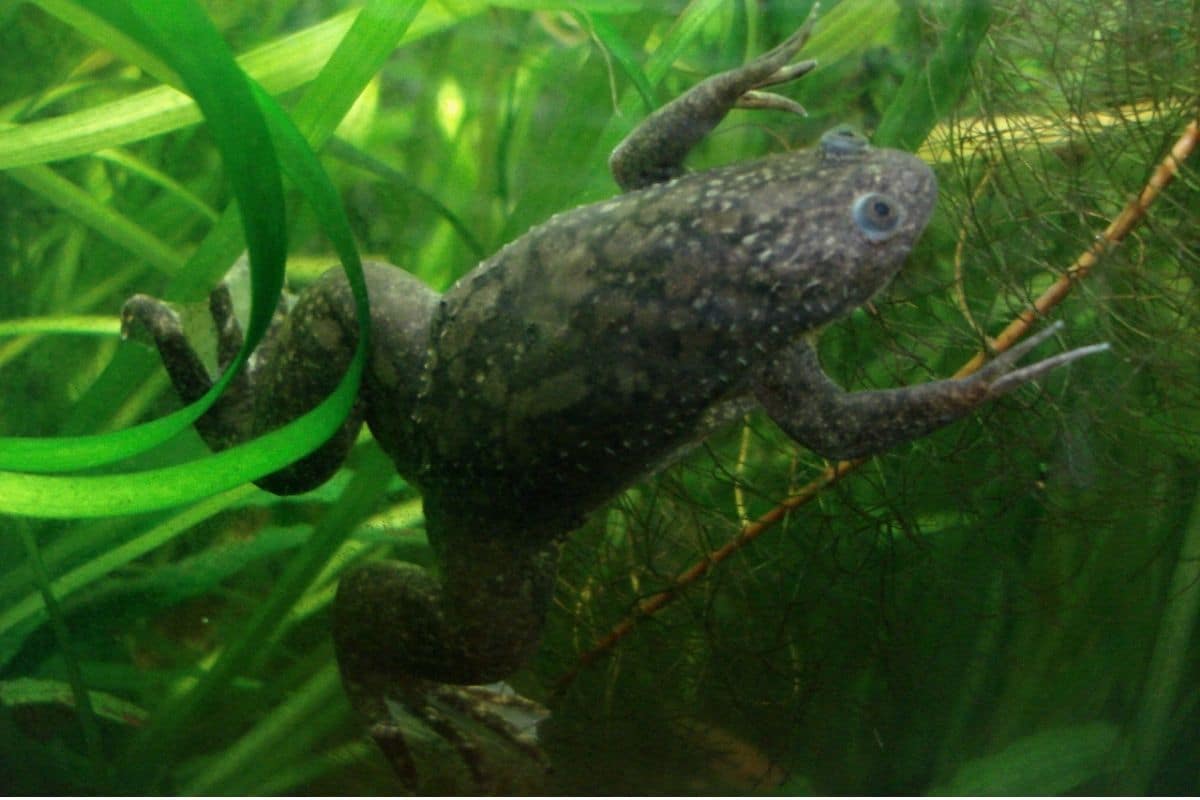
Frogs – unlike for example salamanders – are normally incapable of regenerating limbs. And that makes this a cautious breakthrough.
Some animals possess the peculiar ability to fully regrow amputated limbs. For example, think of salamanders, starfish, crabs and lizards. Some worms can even regenerate their heads – brains and all – after amputation. While this is currently impossible for humans, a new study of frogs brings regenerative medicine one step closer.
frogs
Frogs, like humans, are naturally incapable of regenerating limbs. Yet researchers have managed to regrow a lost clawed frog’s leg. The team initiated the regenerative process by placing the wound in a sealed, silicone cap containing a cocktail of five drugs for 24 hours. Each drug served a different purpose, including suppressing inflammation, inhibiting collagen production (which would lead to scarring), and stimulating the regrowth of nerve fibers, blood vessels and muscles.

The corresponding silicone cap containing the cocktail of medicines. Image: Nirosha Murugan
The researchers make a surprising discovery. For example, thanks to the cocktail, new tissue grew in all frogs treated over the course of eighteen months, resulting in an almost fully functional leg. Even the bone structure was similar to that in a natural leg. At the end even some ‘toes’ grew.
Functional
Not only did the frogs regenerate new legs thanks to the promising cocktail, the limbs even turned out to be useful. This allowed the frogs to move their legs and respond to touch. The frogs could even swim with their newly acquired paws.
Breakthrough
The fact that the researchers have succeeded in allowing an animal that is normally incapable of regeneration to grow a leg back can be called a cautious breakthrough. “It’s exciting to see that the drugs we chose helped create a nearly complete limb,” said study researcher Nirosha Murugan. “In addition, it only took a short exposure to the drugs to initiate a months-long regeneration process. This suggests that frogs – and perhaps other animals – have ‘dormant’ regenerative abilities, which can be activated.”
Mammals
Although regrowth of arms and legs remains the domain of salamanders and superheroes for the time being, the findings promising. Because the researchers may have found a method to prevent the growth of scar tissue in mammals. Although this tissue protects against further blood loss and infection, it also prevents growth. “In mammals, injuries are usually exposed to air or contact with the ground,” said study researcher David Kaplan. “It can therefore take days to weeks for scar tissue to close the wound. But using our silicone cap helps mimic an amniotic fluid environment that, along with the right drugs, allows for a regeneration process without the intervention of scar tissue.”
The researchers therefore plan to find out whether their treatment could work not only in frogs, but also in mammals. And who knows, in a few decades new fingers, arms and legs will grow effortlessly.
Source material:
“Scientists Regrow Frog’s Lost Leg” – Tufts University
Image at the top of this article: Pouzin Olivier